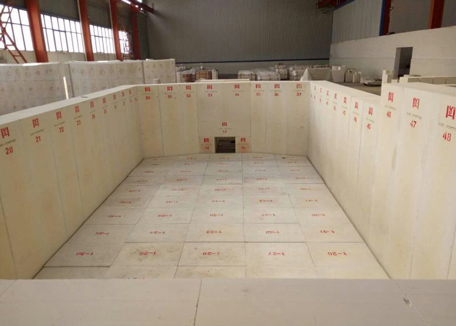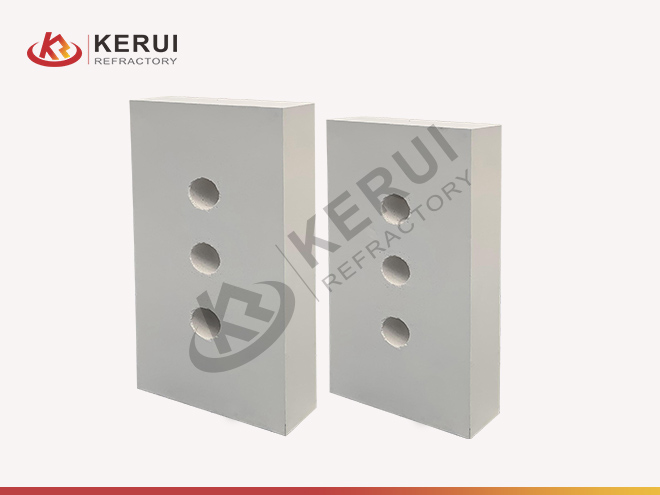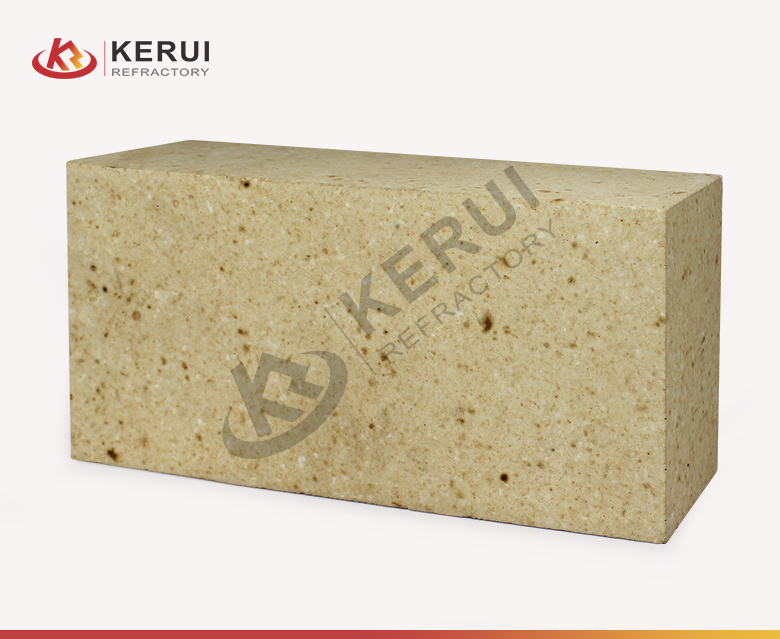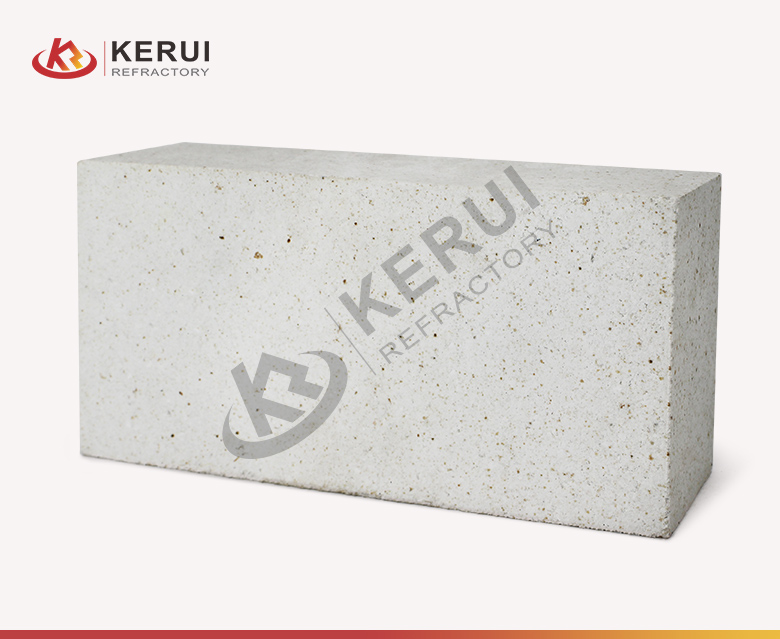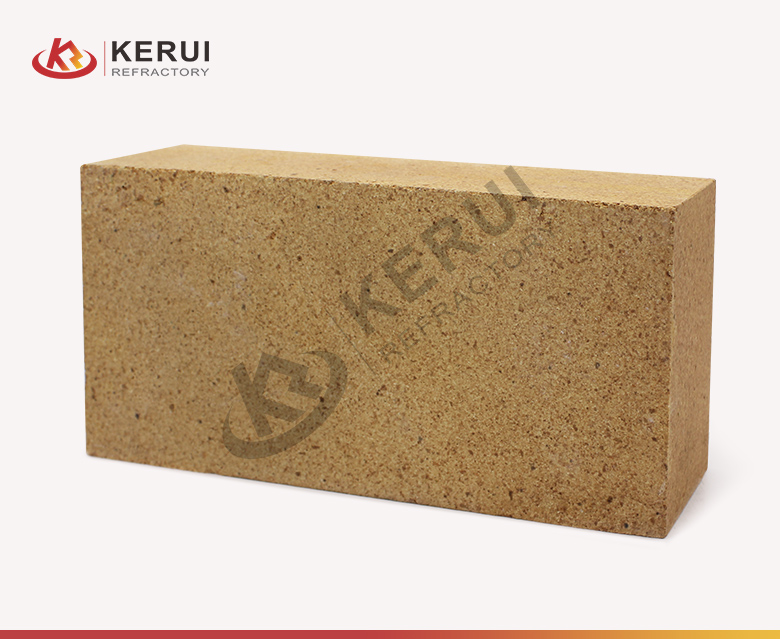Refractory materials play an important role in glass furnace refractory. No doubt that the development of glass melting technology relies heavily on the advancement of refractory material manufacturing technology. For that, Kerui continues to innovate refractory material technology to provide higher quality products for glass furnaces. Now this article will give you more knowledge about glass furnace refractory.
Main Types of Refractory Bricks for Glass Furnace
Refractory Requirements for Various Parts of Glass Furnace
- Glass Furnace Roof
The working temperature of the cold melting section and glass cooling section of the furnace (including the arch angle) is usually around 1600℃(2912℉). Besides, fly ash and alkali vapor generated during the production process will cause high-temperature chemical reactions with refractory materials. Therefore, the refractory material for the top must have high load softening temperature, good creep resistance and high temperature corrosion without contaminating the glass.
- Pool Walls in Glass Furnace
The walls of the melting part and the cooling part are in direct contact with the molten glass. As a result, they are susceptible to chemical erosion caused by high-temperature molten glass. At the same time, it is inevitable that the flow of molten glass will also cause physical erosion. The most important requirement for refractory materials in this part is great resistance to glass liquid erosion.
- Heat Storage Chamber
For regenerators and side walls, it is important to select the high-temperature resistance and chemical resistance of the refractories. Because the surfaces of these parts are often eroded by high temperature, dust or alkali vapor. At the same time, the erosion gradually weakens from top to bottom. Correspondingly, the selection of refractory materials should be determined according to the different temperatures and erosion degrees of different parts.
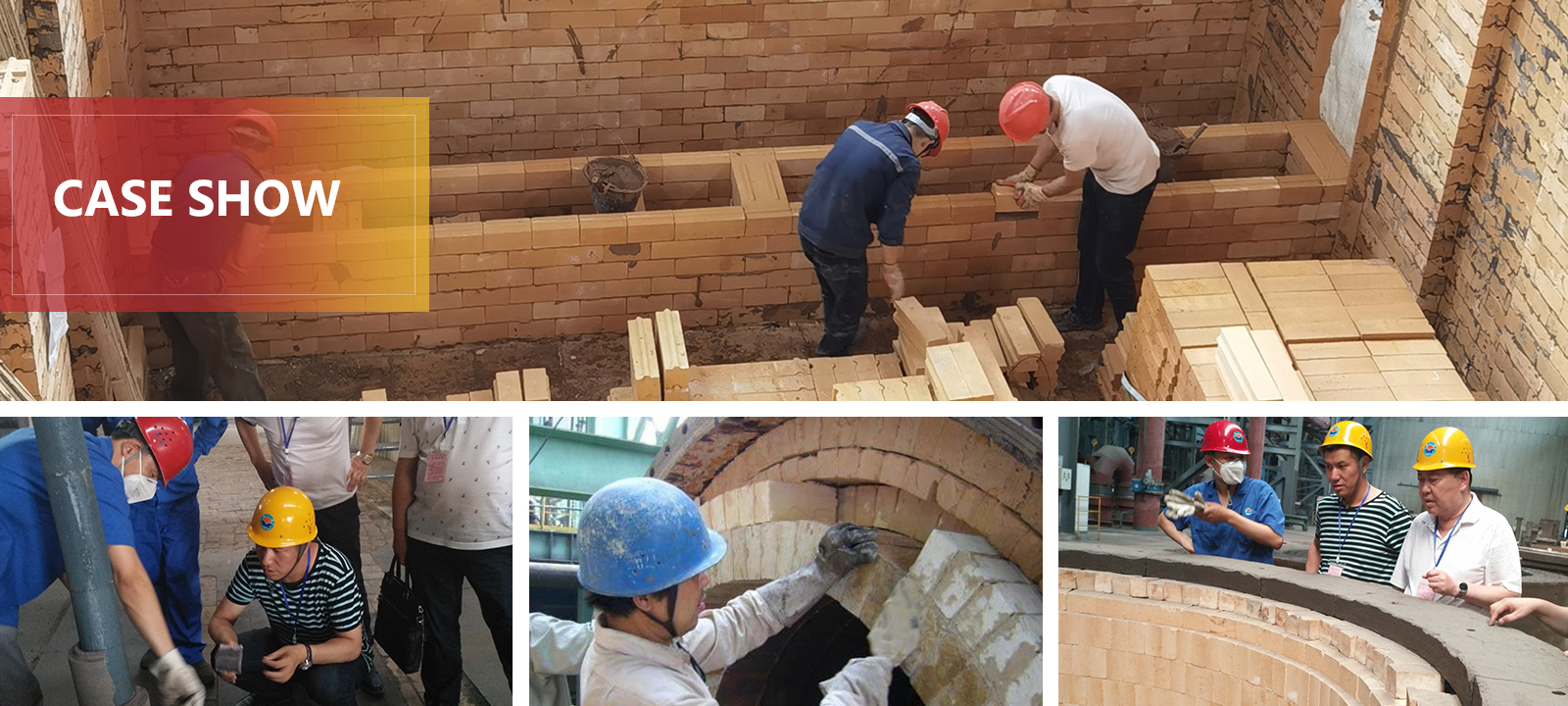
Precautions for Glass Furnace Refractory
Due to the working conditions of various parts of the glass furnace, the requirements for refractory materials are also different. When choosing refractory materials for glass furnaces, you need to consider various factors to ensure the stable operation of the furnace. Here Keri has compiled a few things to note for you:
- The service life of the glass kiln;
- Glass quality requirements;
- Melting rate and melting temperature of glass furnace;
- Insulation conditions, which parts need to be insulated in order to save fuel;
- Which parts of glass kilns require refractory materials?

Maintenance Methods of Glass Furnace Refractory
For its safe operation, the daily maintenance and repair of glass furnace refractory materials is particularly important. Here are some ways to maintain your glass kiln. If you still have questions after reading, you can contact us for more relevant information.
- Before putting the kiln into use, you should prepare some emergency hot-patched refractory materials.
- Be careful to seal the kiln after completing the oven, because it will directly affect the subsequent operating status of the kiln;
- During the operation of the kiln, if there are some minor problems, you should deal with them in time. If cracks and cracks appear, you should seal them immediately to ensure your furnace is in good condition.
- Half a year after putting into operation, you should carefully inspect and clean the regenerator. At the same time, the frequency of inspections is usually low at the beginning and then gradually increases as the year of use increases.
- The selection of refractory materials must have a refractoriness above the daily operating temperature of the furnace, and must not be at the critical temperature it withstands.Otherwise it will seriously affect the service life of the glass furnace.
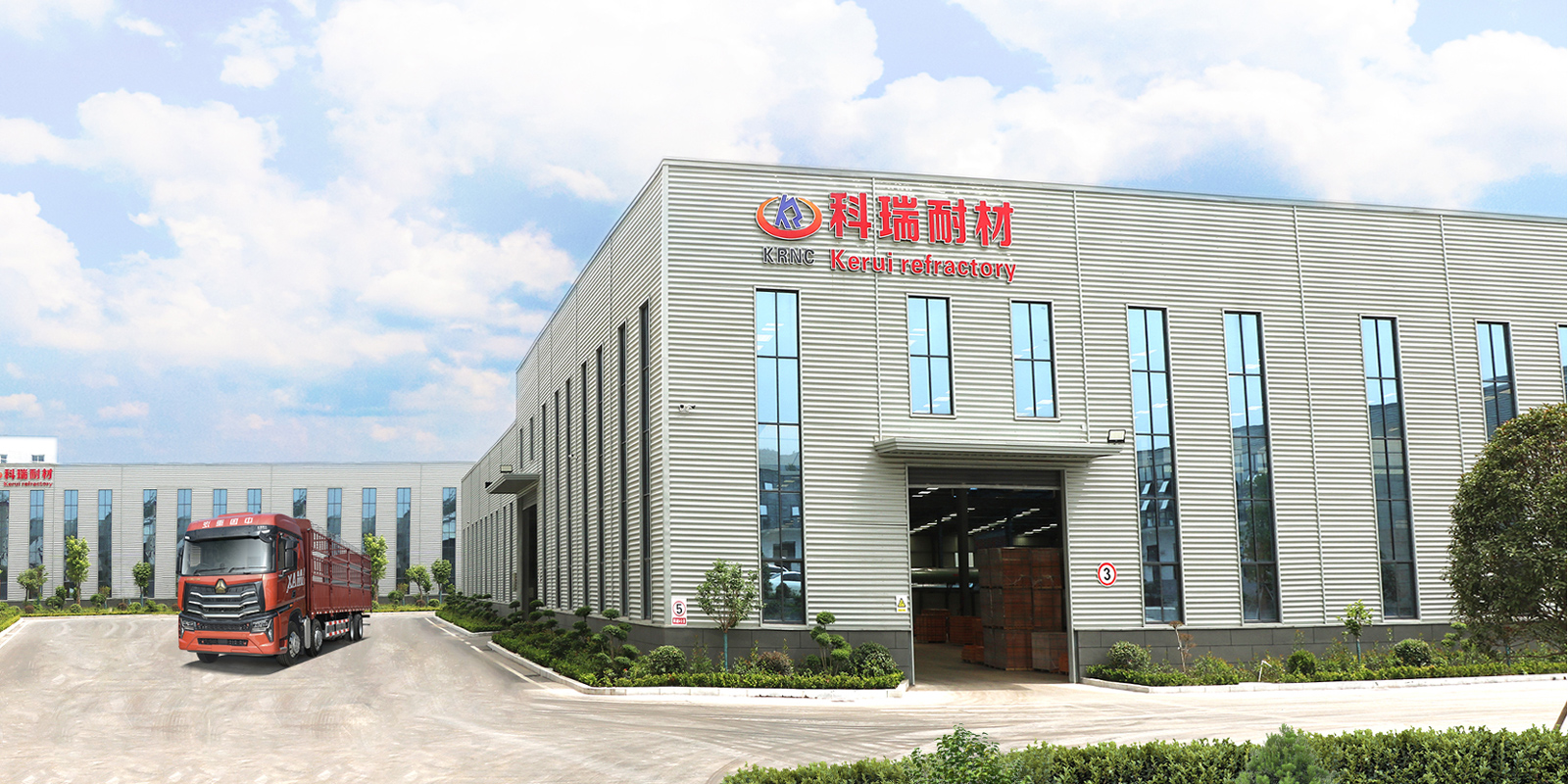
If you still have questions, you can contact Kerui for technical guidance on glass furnace refractory.
Meanwhile, if you need refractory materials for glass furnaces, Kerui can provide you with high-quality and low-price products. Or if you have any questions about the refractory resistance of glass furnaces, you can contact Kerui at any time. Kerui professional team will provide you with the best fire-resistant solutions. And you can also follow us on Pinterest.
